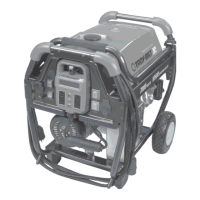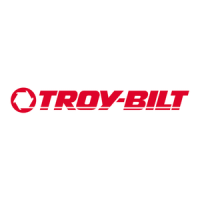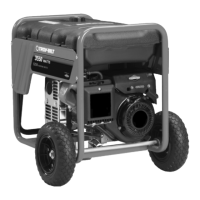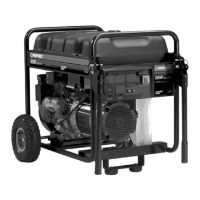
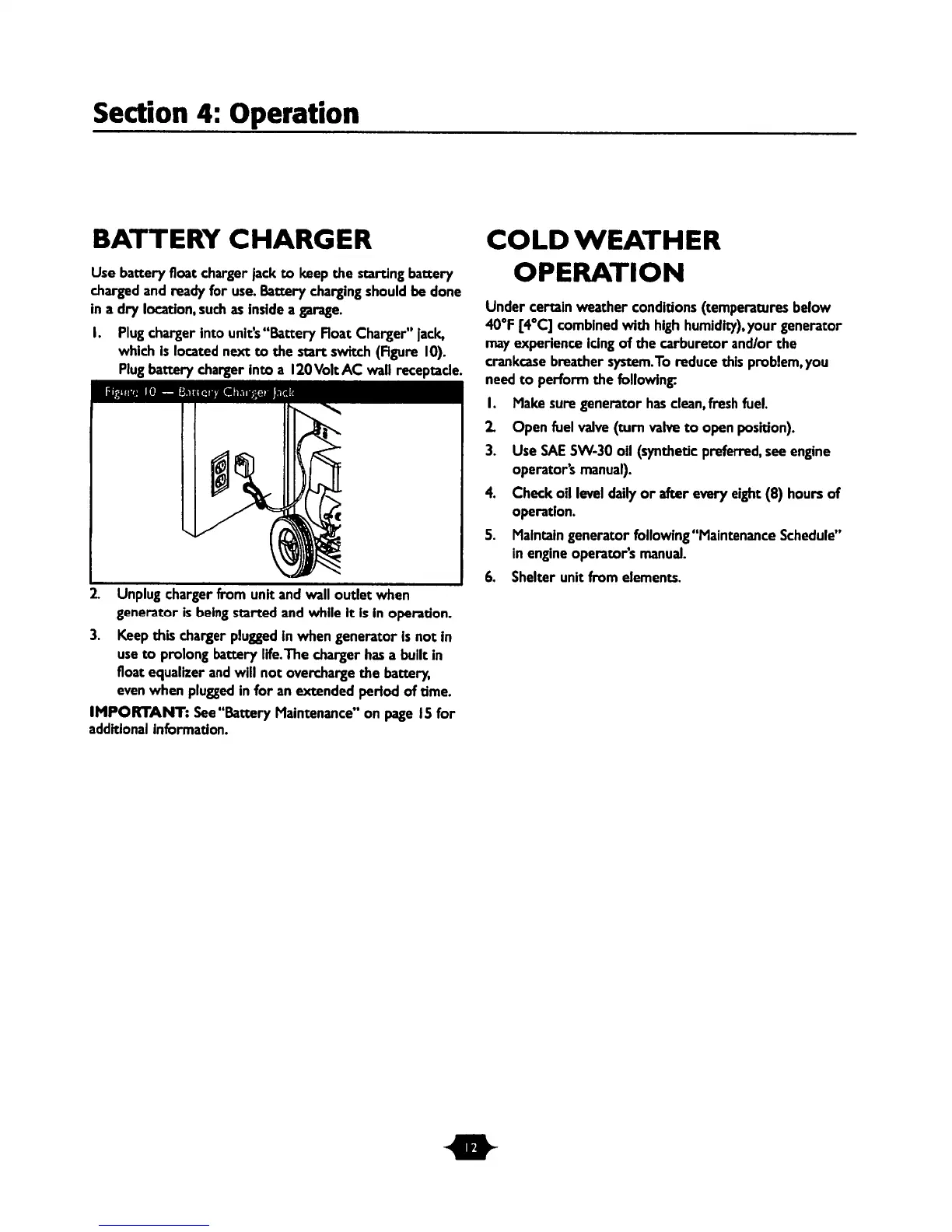 Loading...
Loading...
Do you have a question about the Troy-Bilt 030247 and is the answer not in the manual?
| Engine | Troy-Bilt |
|---|---|
| Starting System | Recoil |
| Engine Type | OHV |
| Noise Level | 68 dB |
| AC Output | 120/240V |
| DC Output | 12V |
| Outlets | 12V DC |
| Fuel Tank Capacity | 4.0 gallons |
Familiarize with generator's applications, limitations, and hazards.
Steps for assembling the generator.
Instructions for operating the generator.
Technical details and requirements of the generator.
Recommended maintenance procedures for the generator.
Guidelines for storing the generator.
Solutions for common generator problems.
General notes and reminders for the user.
Information regarding the generator's warranty coverage.
Explains various safety symbols and their implications.
Overview and identification of generator components and controls.
Instructions for unpacking the generator from its carton.
List of items included in the generator packaging.
Steps for assembling and installing the optional wheel kit.
Information about the electric start feature and battery connection.
Procedure for connecting the negative battery cable.
Preparations required before starting the engine.
Instructions for adding engine oil to the generator.
Steps for adding fuel to the generator's fuel tank.
General guidance on using the generator.
Explanation of the generator's system grounding.
Federal/State regulations related to generator use.
How to connect the generator to a building's electrical system.
Recommended placement and clearance for the generator.
Detailed instructions for operating the generator.
Step-by-step guide to starting the generator engine.
How to safely connect electrical devices to the generator.
Procedures for safely shutting down the generator.
Information about the generator's output receptacles.
Details on using the 120V duplex outlets.
Details on using the 120/240V locking outlet.
Information on the generator adapter cord set.
How to use the battery float charger.
Special considerations for operating in cold weather.
Building a temporary shelter for the generator.
Building a permanent shelter for the generator.
Guidance on managing loads to avoid overloading.
Understanding the generator's power capacity.
Steps for safely connecting electrical loads.
General advice for keeping the generator in good condition.
Instructions for maintaining the generator's engine.
Procedures for maintaining the generator's battery.
How to clean the exterior surfaces of the generator.
Guidelines for preparing and storing the generator.
Instructions for storing the generator's engine.
Additional recommendations for effective generator storage.
Defines the duration of warranty coverage for different uses.

